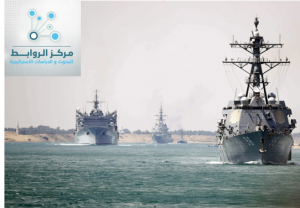Dr… Salim Mohammed Al-Zanoun *
Tensions between the United States and Iran have risen recently. While Washington has tightened its economic sanctions to the point of crushing the Iranian economy, Tehran has moved from a wait-and-see strategy , based on the patience until the next US elections in the hope of the advent of more flexible administration ; to the strategy of gradual escalation based on using its arms to target Washington’s allies, specifically the oil interests, in order to create a shake in the global oil market , and provocative movements of the two sides impose three possible scenarios:
Scenario I: The continuity of tension.
The more likely scenario with a rate of 50% according to Eurasia Group estimates , in which both sides continue the war of wards and keep knocking the war drums without reaching it , and tension is expected to continue between the two sides until the end of this year, but it is a balanced tension under control and accurate calculations, under which Washington controls economic sanctions, and impose new sanctions targeting sectors other than oil, in return, Tehran supports its agents to carry out asymmetric attacks on the oil infrastructure of the Gulf countries to shake the oil markets.
The key point in this scenario, which could break the situation, is Tehran’s breach of the nuclear agreement by exceeding the uranium enrichment rate specified in the agreement, but IAEA reports still indicate that it is fulfilling its obligation to the fullest and, based on preliminary assessments, it ill remains within the limits of the agreement in short term .
The second scenario: the military confrontation.
The US administration is divided over the objectives of its policy towards Iran, and in this context there are two schools, the first led by national security adviser, “John Bolton”, and sees the need to pressure to change the Iranian regime or collapse, and thus work to provoke Tehran to take action to require a US military response, the second Led by Foreign Minister “Mick Pompeo” and sees the need to focus on the negotiations, and President “Trump” moves between the two schools , sometimes talking about negotiations, and other times dealing with the war, in contrast there are two schools in Iran, hawks demanding steps to escalate, to withdraw from the agreement of 2015 and The Nuclear Non-Proliferation Treaty (NPT) of 1968, and the middle School, demanding that the various files be negotiated.
The actions of both sides increase the risk of military confrontation, as a result of miscalculations, misunderstandings, lack of channels of communication, or the result of agents moving on both sides.
In this context, the scenario of military confrontation takes two possibilities:
The first possibility: a large military confrontation, this is the least likely probability, and is 9% , and according to the estimates of the Eurasian group, including the temporary closure of the Strait of Hormuz, and the great destruction of Iran’s oil and nuclear facilities, Washington relies on an attack (air and sea) not land attack on Iran and works to enhances its presence in the Gulf as a deterrent and to facilitate logistical support for the campaign , and it is expected that Iran to attack US installations and bases in the region and the oil infrastructure of the Gulf states, leading to the rise of oil price more than $ 150 a barrel.
The second possibility: a limited military confrontation, and this possibility is 21% according to the Eurasia Group, including the launch of Washington electronic attacks, targeting the vital interests of Iran, military and civilian, and the implementation of secret operations targeting the Revolutionary Guards, Iran’s active arms and likely to move to carry out attacks besieging Iranian soft power , Radio of the Republic of Iran, the Islamic Culture and Relations Organization, Al-Mustafa International University, the international charities institutions , while Iran is launching attacks on American personnel in third countries (especially Iraq and Syria) or at sea. This scenario lasts for limited period as the two sides will work to stop the escalation, this conflict will lead to a rise in the price of a barrel of oil above $ 100, with high rates of insurance for oil tankers.
The third Scenario: Negotiations.
The possibility of talks between the two sides is very weak, and 20%, according to the estimates of Eurasian Group, but can not be ignored in the light of the calling of two sides for negotiations, if the negotiations start, it is likely to focus heavily on the issue of prisoners exchange. It meets the minimum for both sides , for Iran, to reduce the military tensions and reduce the sanctions and enhances the local trust , for Washington , Trump is given a quick “win” in the election campaign without mitigating the complexities of the nuclear issues , and for the nuclear issue, the parties will reach minor adjustments that makes Trump to feel that he is winning , and the possibility that the negotiations would include Iran’s regional policy remains low .
Rawabet Center for Research and Strategic Studies

